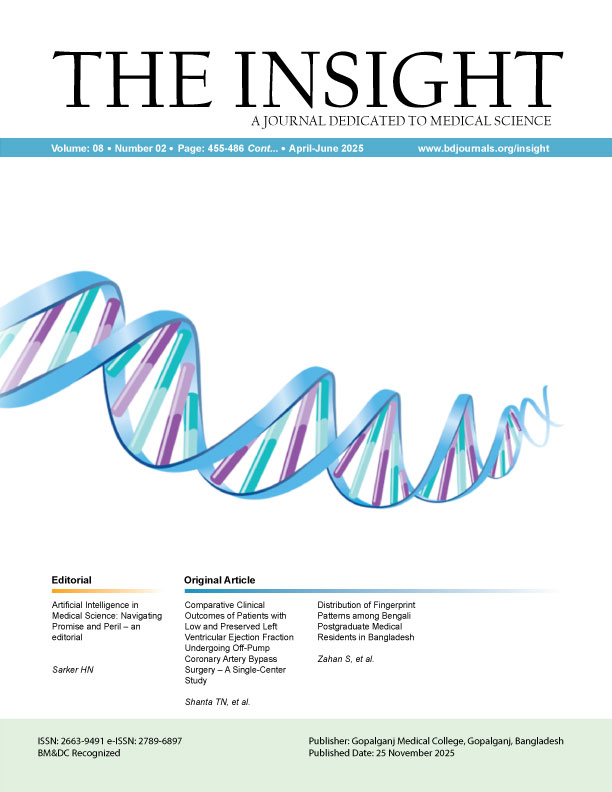Abstract
Background: Left ventricular dysfunction is a major risk factor influencing outcomes after coronary artery bypass grafting (CABG). Off-pump CABG (OPCABG) has been proposed as a safer alternative for patients with reduced ejection fraction by avoiding cardiopulmonary bypass-related complications. This study aimed to compare intraoperative and early postoperative outcomes between patients with reduced and preserved left ventricular ejection fraction (LVEF). Methods & Materials: This comparative observational study was conducted in the Department of Cardiac surgery, United Hospital, Dhaka, Bangladesh, from July 2024 to December 2024. A total of 100 patients undergoing OPCABG were included: Group A (LVEF ≤35%, n=50) and Group B (LVEF >35%, n=50). Results: Patients with reduced LVEF were slightly older (61.8 ± 8.2 vs. 58.4 ± 7.9 years; p=0.041) and had more prior myocardial infarctions (64% vs. 44%; p=0.047). Group A received fewer grafts (2.7 ± 0.8 vs. 3.1 ± 0.7; p=0.008) and required longer operative time (220 ± 35 vs. 205 ± 30 min; p=0.03). The need for intra-aortic balloon pump (16% vs. 4%; p=0.046), prolonged inotropic support (42% vs. 20%; p=0.018), ICU stay (3.8 ± 1.6 vs. 2.9 ± 1.1 days; p=0.004), and hospital stay (9.2 ± 2.5 vs. 7.8 ± 2.0 days; p=0.006) were higher in Group A. LVEF improved significantly in both groups, with greater recovery in Group A (Δ% +8.4 ± 4.1 vs. +4.8 ± 3.9; p=0.002). Conclusion: OPCABG is safe and effective even in patients with severe left ventricular dysfunction, resulting in significant improvement in ventricular function and acceptable early morbidity and mortality rates.

This work is licensed under a Creative Commons Attribution 4.0 International License.
Copyright (c) 2025 The Insight





 PDF
PDF